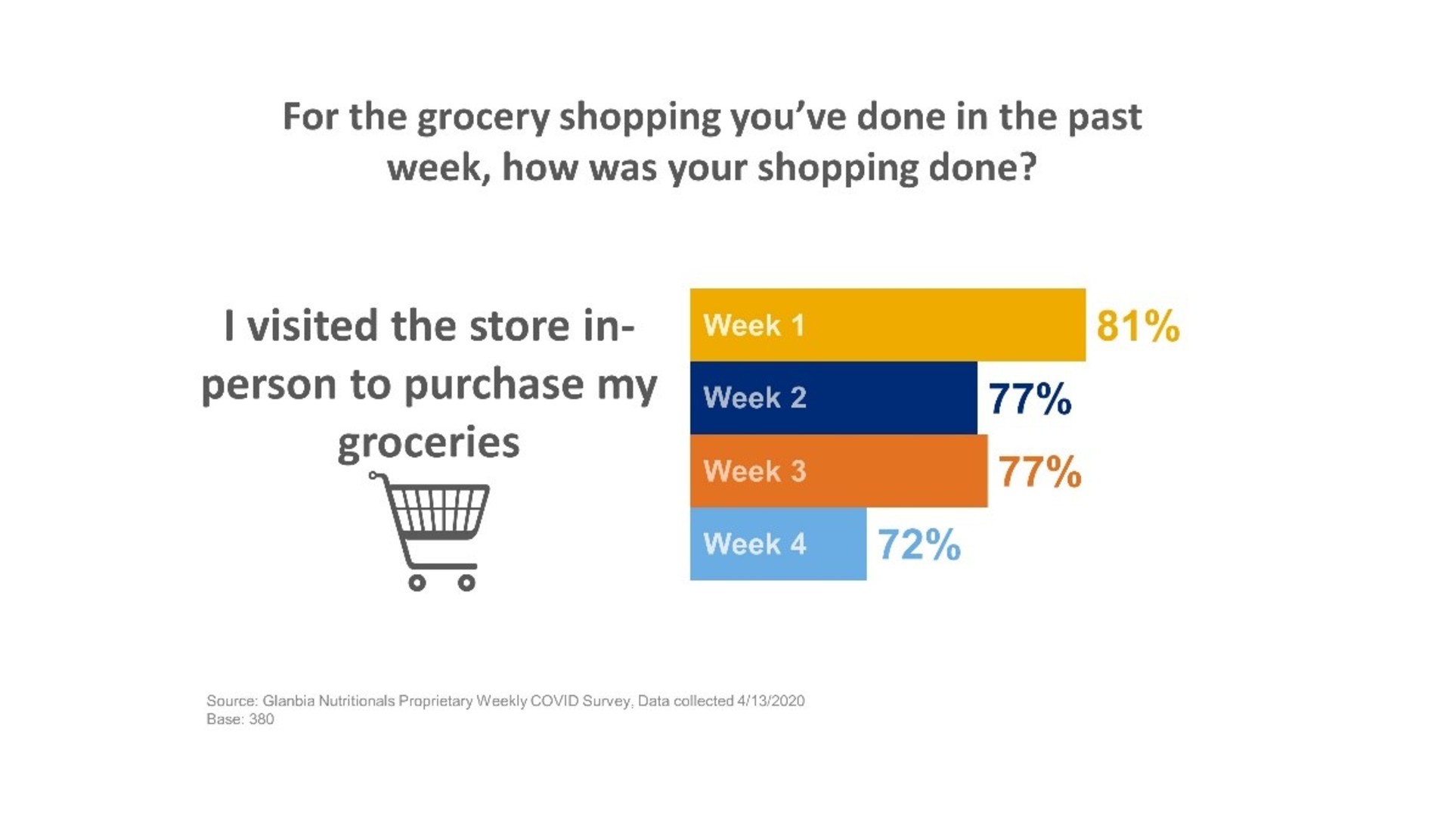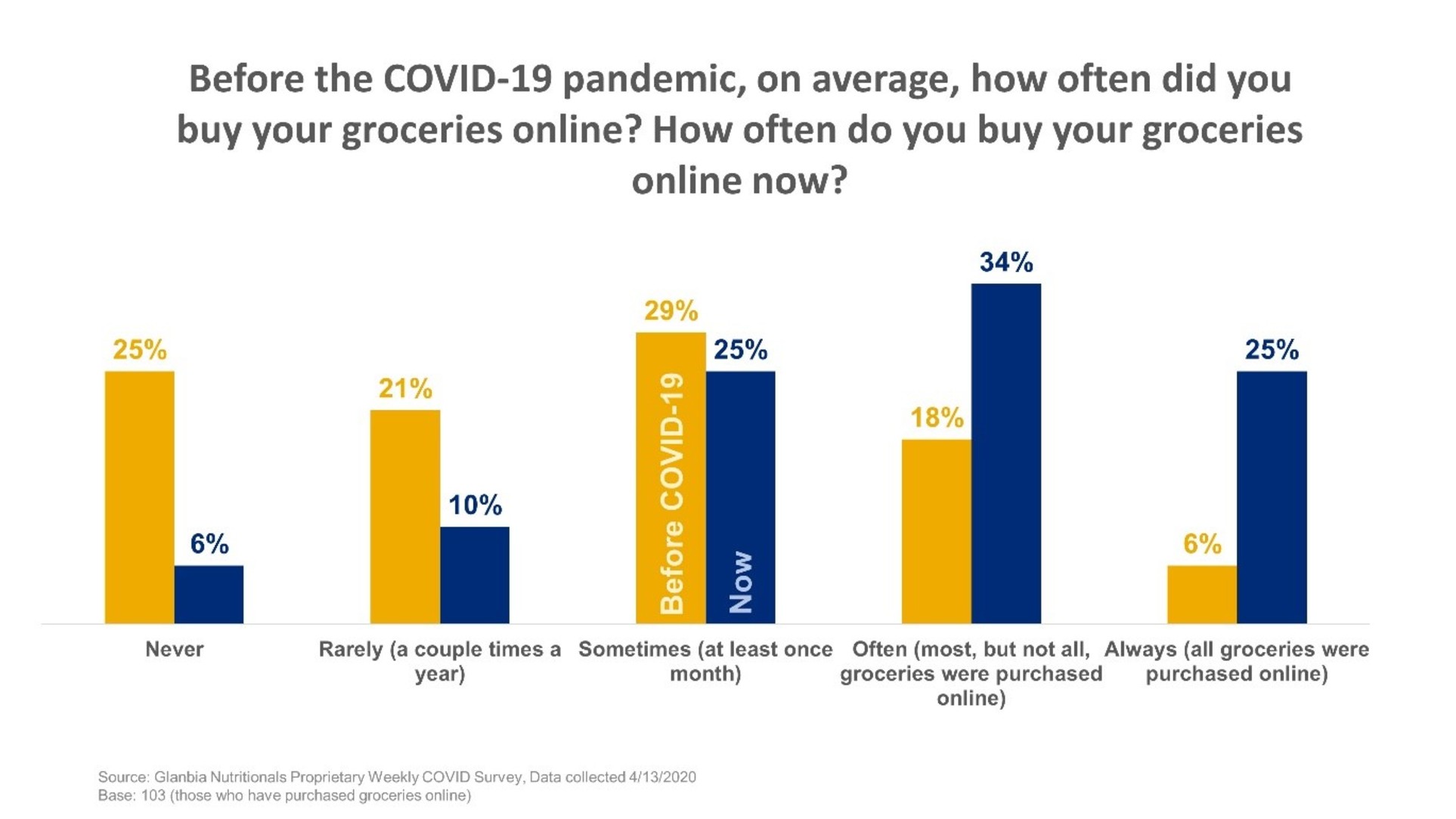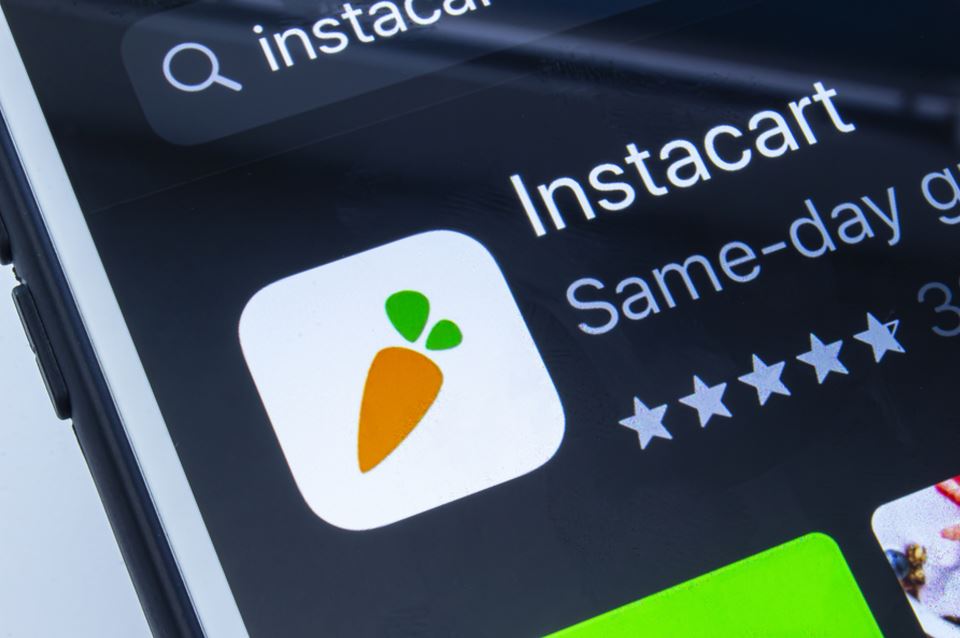In-Person Grocery Shopping Drops Again
Glanbia has been tracking the many recent changes in food purchasing behaviors through its regular weekly consumer surveys. Early on we saw a decline in restaurant visits and a rise in the purchase of packaged retail foods, with protein and energy bars standing out as go-to nutrition solutions.
We also saw in-store grocery purchases decline from Week 1 to Week 2 but then level off in Week 3 at 77 percent. Now, in Week 4, in-store grocery purchasing has dipped again as only 72 percent of consumers reported visiting a store in-person for their grocery shopping.



